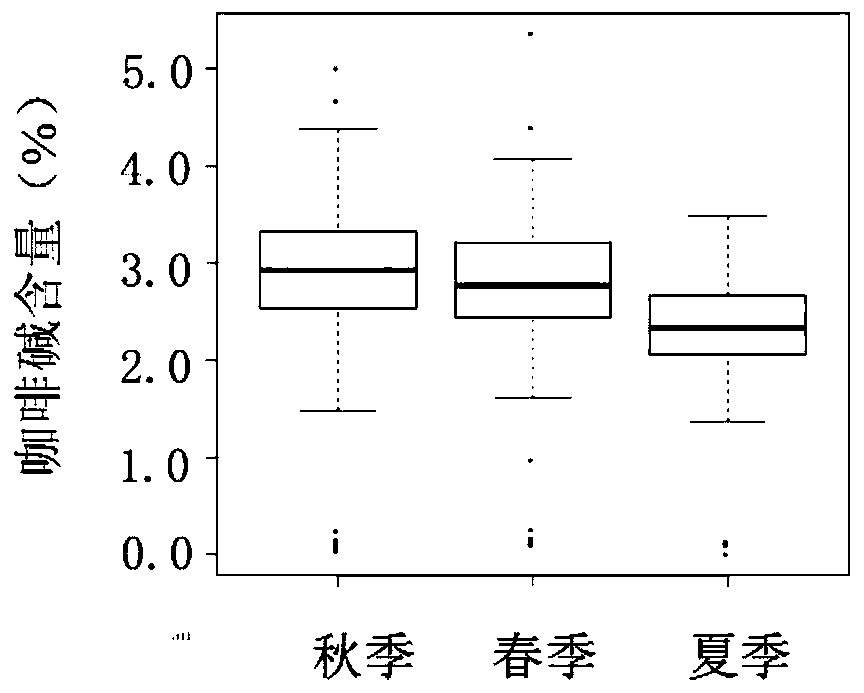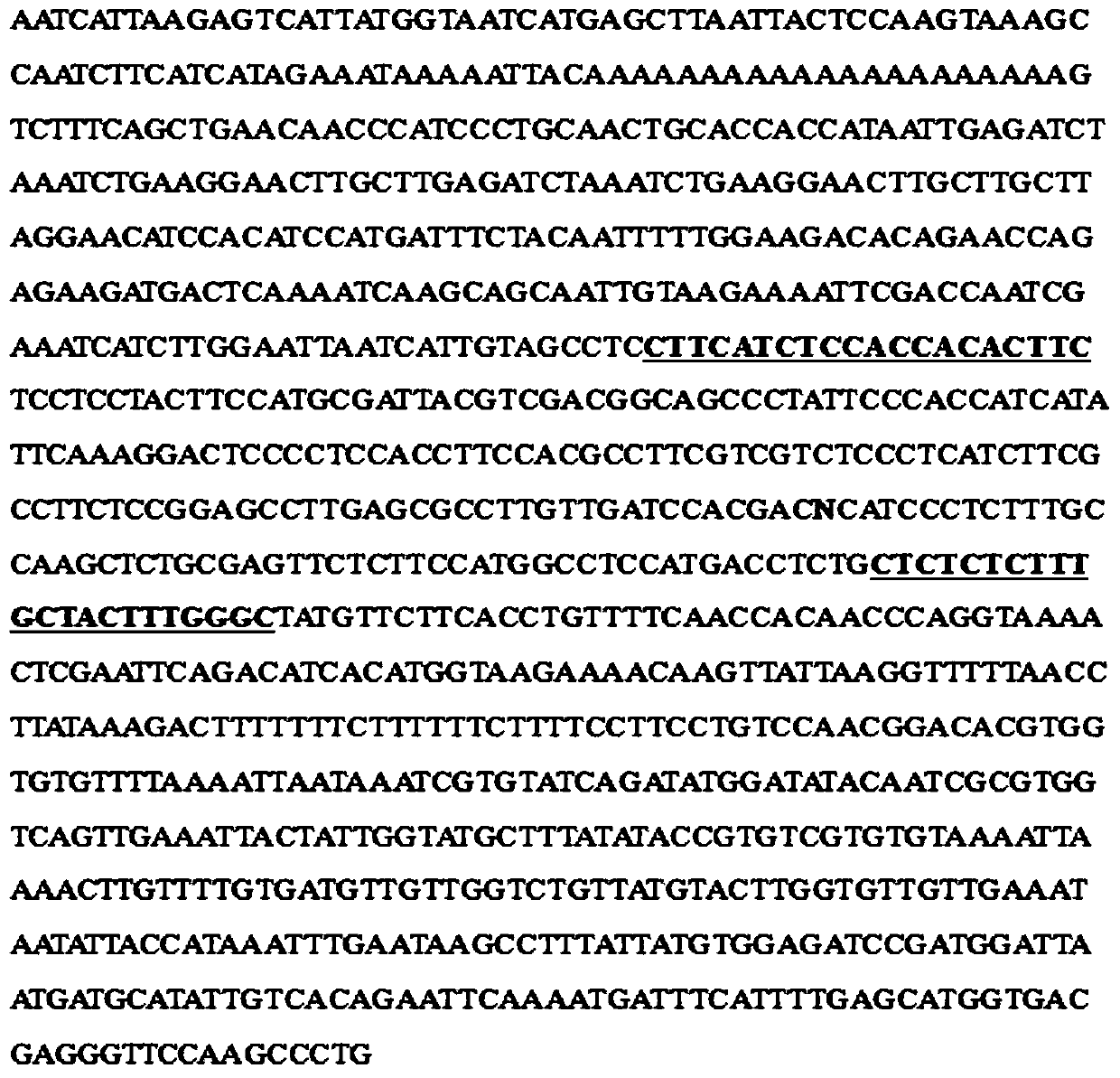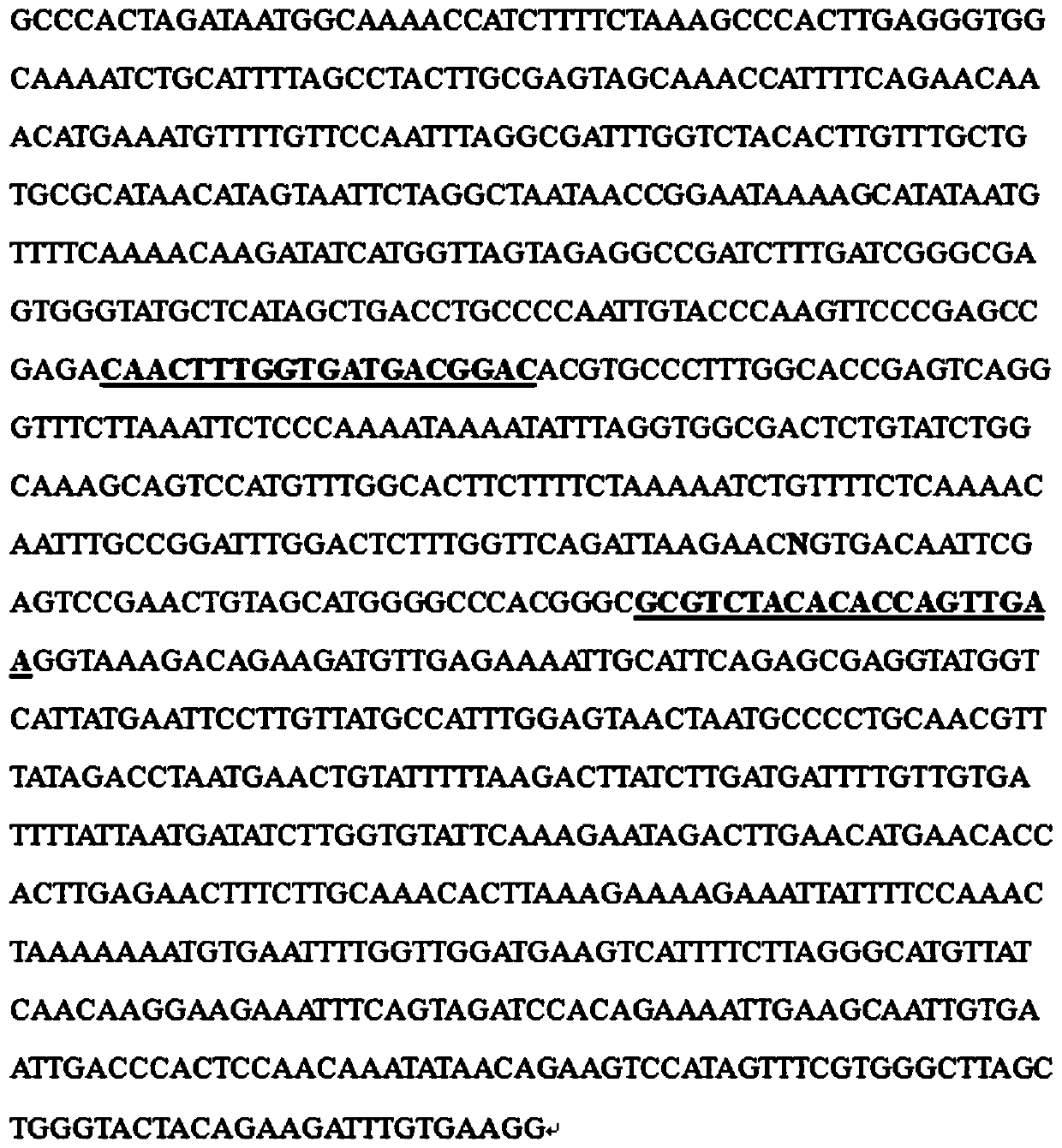SNP molecular markers linked to tea tree caffeine content of and its application
A technology of molecular markers and caffeine, which is applied in the field of molecular genetics and breeding, can solve the problems of affecting the content of caffeine and failing to find it
- Summary
- Abstract
- Description
- Claims
- Application Information
AI Technical Summary
Problems solved by technology
Method used
Image
Examples
Embodiment 1
[0067] 1. Experimental samples
[0068] Collected 191 tea tree materials located in the Guangdong Tea Tree Germplasm Resource Bank (Guangdong, Yingde, 113.3OE, 24.3ON), including 124 in Guangdong, 20 in Fujian, 15 in Guangxi, 9 in Zhejiang, 6 in Hunan, and 6 in Yunnan 1 copy in Jiangxi, 1 copy in Guizhou, and 1 copy in Taiwan. In addition, 8 descendants of Kenyan tea species and 1 descendant of Georgian species, the selected materials are widely representative.
[0069] The selected resources are randomly distributed in the resource pool. Single planting in double rows, each row 4m, row spacing 1.5m, plant spacing 35cm. The resource bank conducts routine water and fertilizer management. At the end of 2016, the resources were pruned and basal fertilizer was applied in deep pits, 4 tons of organic fertilizer, 0.75 tons of peanut bran and 10 catties of compound fertilizer per mu. After spring tea and summer tea in 2017, pruning and topdressing outside the roots, 30 catties of...
Embodiment 2
[0093] Example 2 Verification of SNP sites
[0094] 1. Experimental method
[0095] SNP site 1 (Scaffold115: 803980) and SNP site 2 (Scaffold720: 596655) were verified in another population containing 98 germplasm.
[0096] 1. Detect the caffeine content of each sample. The specific detection method is the same as in Example 1.
[0097] 2. Use the SnaPShot technology platform to detect the SNP sites 1 (Scaffold115: 803980) and 2 (Scaffold720: 596655) of each sample.
[0098] This method designs primers of different lengths for different mutation sites. After the SNaPshot reaction, the products are separated by electrophoresis, detected by five-color fluorescence, and analyzed by Gene mapper. Multiple SNP sites can be detected in one sequencing reaction. Using SNaPshot for fixed-point sequence analysis, its basic principle follows the dideoxy termination method in direct DNA sequencing, the difference is that there are only different fluorescently labeled ddNTPs in the PCR r...
Embodiment 3
[0145] Embodiment 3 A kind of test kit for evaluating tea tree caffeine content
[0146] 1. Composition
[0147] The nucleotide sequence of which is shown in SEQ ID NO: 2-3 as the primer for detecting SNP site 1 or / and the nucleotide sequence of which is shown in SEQ ID NO: 5-6 as the primer for detecting SNP site 2, 2×Taq PCR Master Mix, ddH 2 O.
[0148] Wherein, SNP site 1 primer F: CTTCATCTCCACCACACTTC (SEQ ID NO: 2);
[0149] SNP site 1 primer R: GCCCAAAGTAGCAAAGAGAG (SEQ ID NO: 3).
[0150] SNP site 2 primer F: CAACTTTGGTGATGACGGAC (SEQ ID NO: 5);
[0151] SNP site 2 primer R: TTCAACTGGTGTGTAGACGC (SEQ ID NO: 6).
[0152] 2. How to use
[0153] (1) Extract the total DNA of tea tree shoots by the CTAB method, and ensure that the A260 / A280 of each DNA sample is between 1.8 and 2.0, and the concentration is greater than 100 μg / μl;
[0154] (2) PCR amplification
[0155] The detection primers whose nucleotide sequences are shown in SEQ ID NO: 2-3 and SEQ ID NO: 5-6 a...
PUM
 Login to view more
Login to view more Abstract
Description
Claims
Application Information
 Login to view more
Login to view more - R&D Engineer
- R&D Manager
- IP Professional
- Industry Leading Data Capabilities
- Powerful AI technology
- Patent DNA Extraction
Browse by: Latest US Patents, China's latest patents, Technical Efficacy Thesaurus, Application Domain, Technology Topic.
© 2024 PatSnap. All rights reserved.Legal|Privacy policy|Modern Slavery Act Transparency Statement|Sitemap



